Jorge Pérez-Aracil
AI for Extreme Event Modeling and Understanding: Methodologies and Challenges
Jun 28, 2024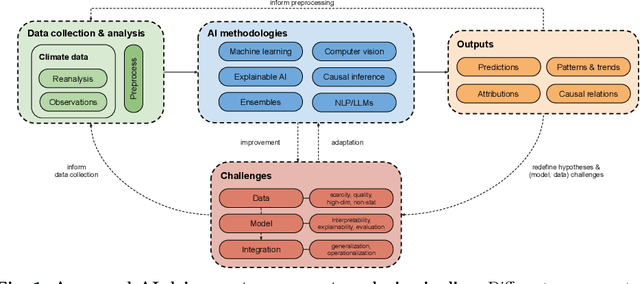

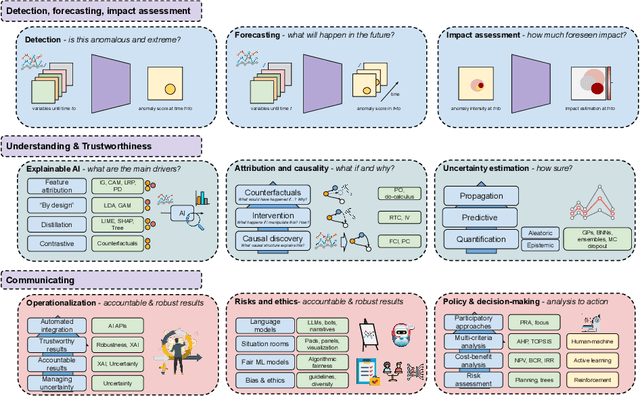

Abstract:In recent years, artificial intelligence (AI) has deeply impacted various fields, including Earth system sciences. Here, AI improved weather forecasting, model emulation, parameter estimation, and the prediction of extreme events. However, the latter comes with specific challenges, such as developing accurate predictors from noisy, heterogeneous and limited annotated data. This paper reviews how AI is being used to analyze extreme events (like floods, droughts, wildfires and heatwaves), highlighting the importance of creating accurate, transparent, and reliable AI models. We discuss the hurdles of dealing with limited data, integrating information in real-time, deploying models, and making them understandable, all crucial for gaining the trust of stakeholders and meeting regulatory needs. We provide an overview of how AI can help identify and explain extreme events more effectively, improving disaster response and communication. We emphasize the need for collaboration across different fields to create AI solutions that are practical, understandable, and trustworthy for analyzing and predicting extreme events. Such collaborative efforts aim to enhance disaster readiness and disaster risk reduction.
Spain on Fire: A novel wildfire risk assessment model based on image satellite processing and atmospheric information
Jun 08, 2023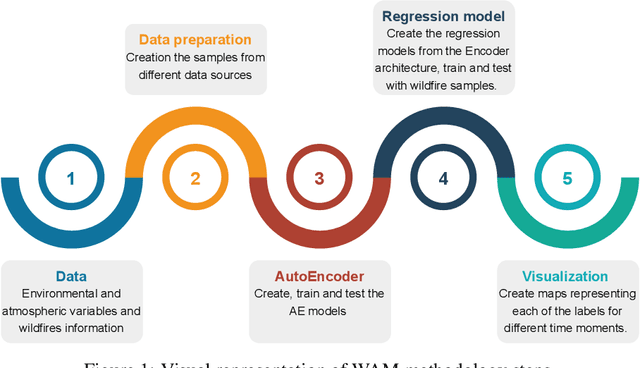
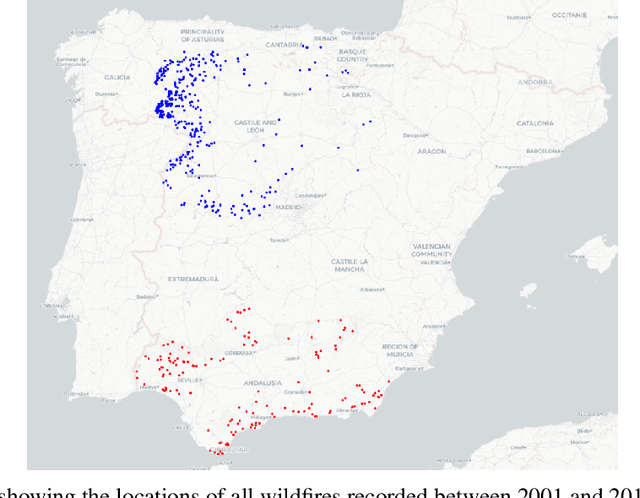
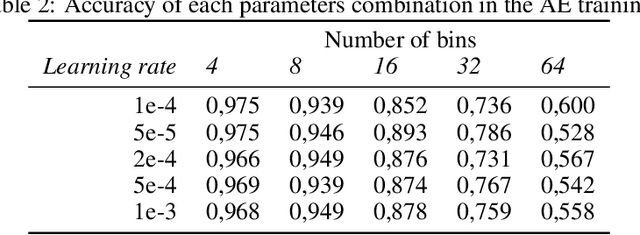
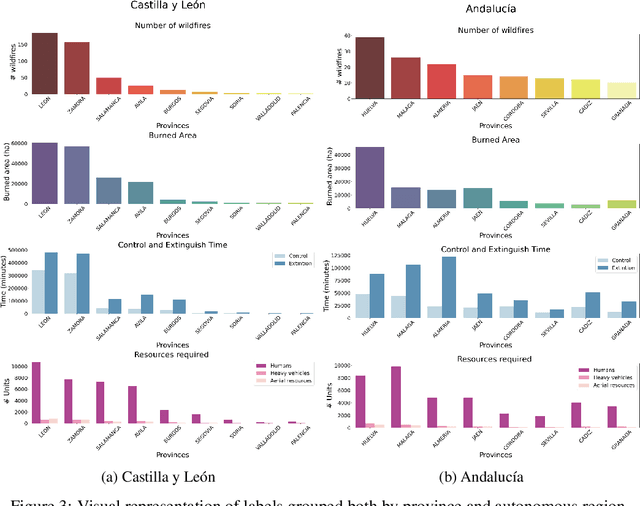
Abstract:Each year, wildfires destroy larger areas of Spain, threatening numerous ecosystems. Humans cause 90% of them (negligence or provoked) and the behaviour of individuals is unpredictable. However, atmospheric and environmental variables affect the spread of wildfires, and they can be analysed by using deep learning. In order to mitigate the damage of these events we proposed the novel Wildfire Assessment Model (WAM). Our aim is to anticipate the economic and ecological impact of a wildfire, assisting managers resource allocation and decision making for dangerous regions in Spain, Castilla y Le\'on and Andaluc\'ia. The WAM uses a residual-style convolutional network architecture to perform regression over atmospheric variables and the greenness index, computing necessary resources, the control and extinction time, and the expected burnt surface area. It is first pre-trained with self-supervision over 100,000 examples of unlabelled data with a masked patch prediction objective and fine-tuned using 311 samples of wildfires. The pretraining allows the model to understand situations, outclassing baselines with a 1,4%, 3,7% and 9% improvement estimating human, heavy and aerial resources; 21% and 10,2% in expected extinction and control time; and 18,8% in expected burnt area. Using the WAM we provide an example assessment map of Castilla y Le\'on, visualizing the expected resources over an entire region.
New Probabilistic-Dynamic Multi-Method Ensembles for Optimization based on the CRO-SL
Dec 02, 2022Abstract:In this paper we propose new probabilistic and dynamic (adaptive) strategies to create multi-method ensembles based on the Coral Reefs Optimization with Substrate Layers (CRO-SL) algorithm. The CRO-SL is an evolutionary-based ensemble approach, able to combine different search procedures within a single population. In this work we discuss two different probabilistic strategies to improve the algorithm. First, we defined the Probabilistic CRO-SL (PCRO-SL), which substitutes the substrates in the CRO-SL population by {\em tags} associated with each individual. Each tag represents a different operator which will modify the individual in the reproduction phase. In each generation of the algorithm, the tags are randomly assigned to the individuals with a similar probability, obtaining this way an ensemble with a more intense change in the application of different operators to a given individual than the original CRO-SL. The second strategy discussed in this paper is the Dynamical Probabilistic CRO-SL (DPCRO-SL), in which the probability of tag assignment is modified during the evolution of the algorithm, depending on the quality of the solutions generated in each substrate. Thus, the best substrates in the search process will be assigned with a higher probability that those which showed a worse performance during the search. We test the performance of the proposed probabilistic and dynamic ensembles in different optimization problems, including benchmark functions and a real application of wind turbines layout optimization, comparing the results obtained with that of existing algorithms in the literature.
Accurate Long-term Air Temperature Prediction with a Fusion of Artificial Intelligence and Data Reduction Techniques
Sep 29, 2022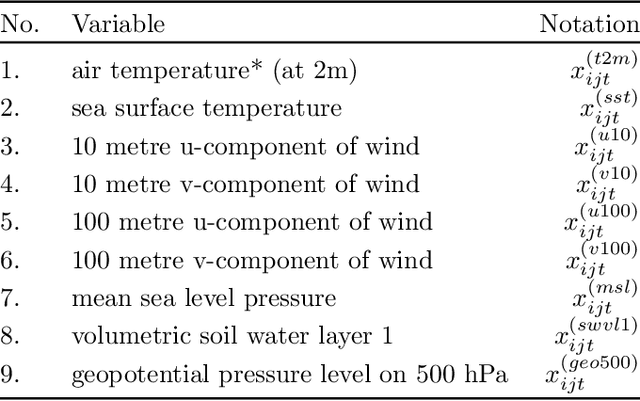
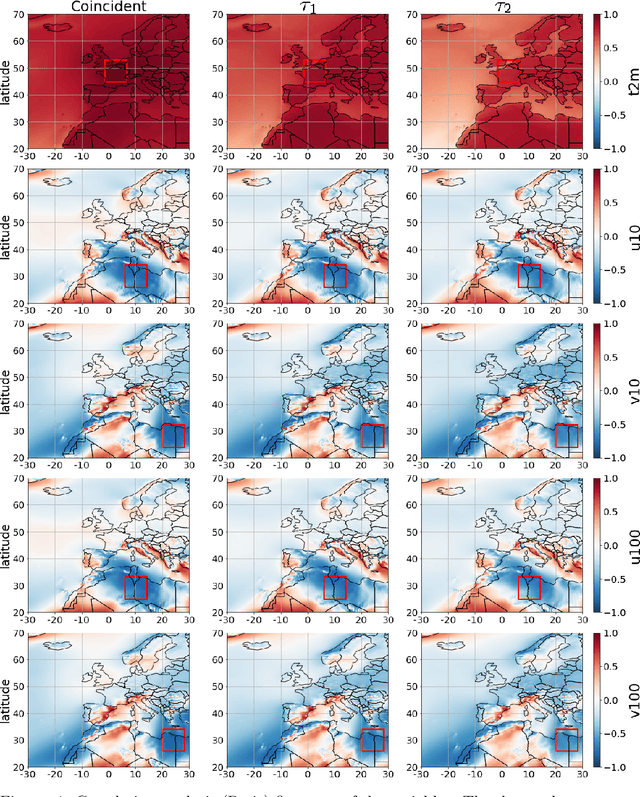
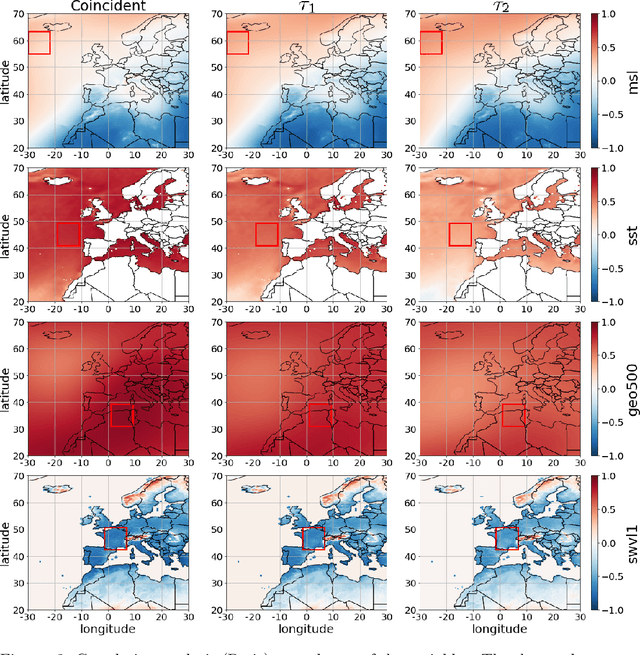
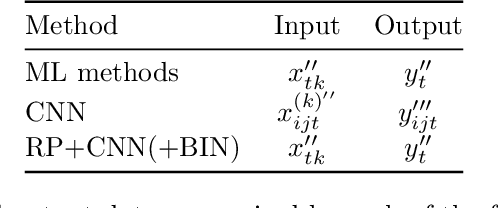
Abstract:In this paper three customised Artificial Intelligence (AI) frameworks, considering Deep Learning (convolutional neural networks), Machine Learning algorithms and data reduction techniques are proposed, for a problem of long-term summer air temperature prediction. Specifically, the prediction of average air temperature in the first and second August fortnights, using input data from previous months, at two different locations, Paris (France) and C\'ordoba (Spain), is considered. The target variable, mainly in the first August fortnight, can contain signals of extreme events such as heatwaves, like the mega-heatwave of 2003, which affected France and the Iberian Peninsula. Thus, an accurate prediction of long-term air temperature may be valuable also for different problems related to climate change, such as attribution of extreme events, and in other problems related to renewable energy. The analysis carried out this work is based on Reanalysis data, which are first processed by a correlation analysis among different prediction variables and the target (average air temperature in August first and second fortnights). An area with the largest correlation is located, and the variables within, after a feature selection process, are the input of different deep learning and ML algorithms. The experiments carried out show a very good prediction skill in the three proposed AI frameworks, both in Paris and C\'ordoba regions.
 Add to Chrome
Add to Chrome Add to Firefox
Add to Firefox Add to Edge
Add to Edge